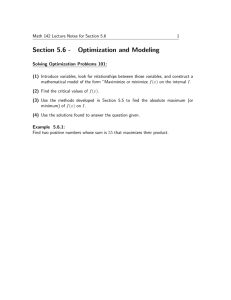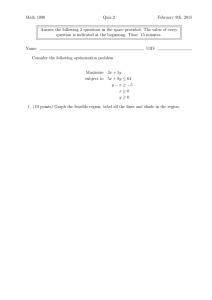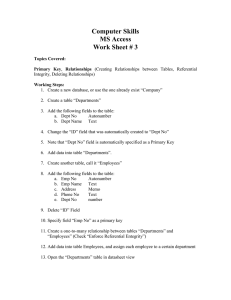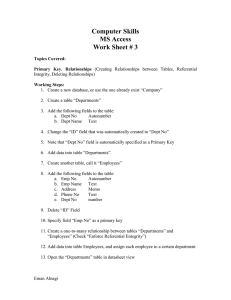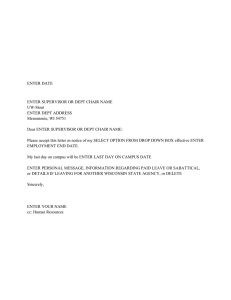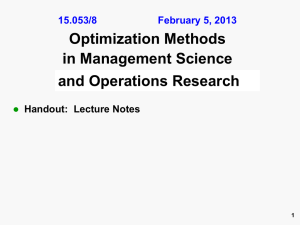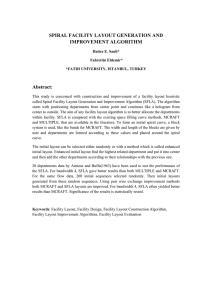Linear Programming
advertisement
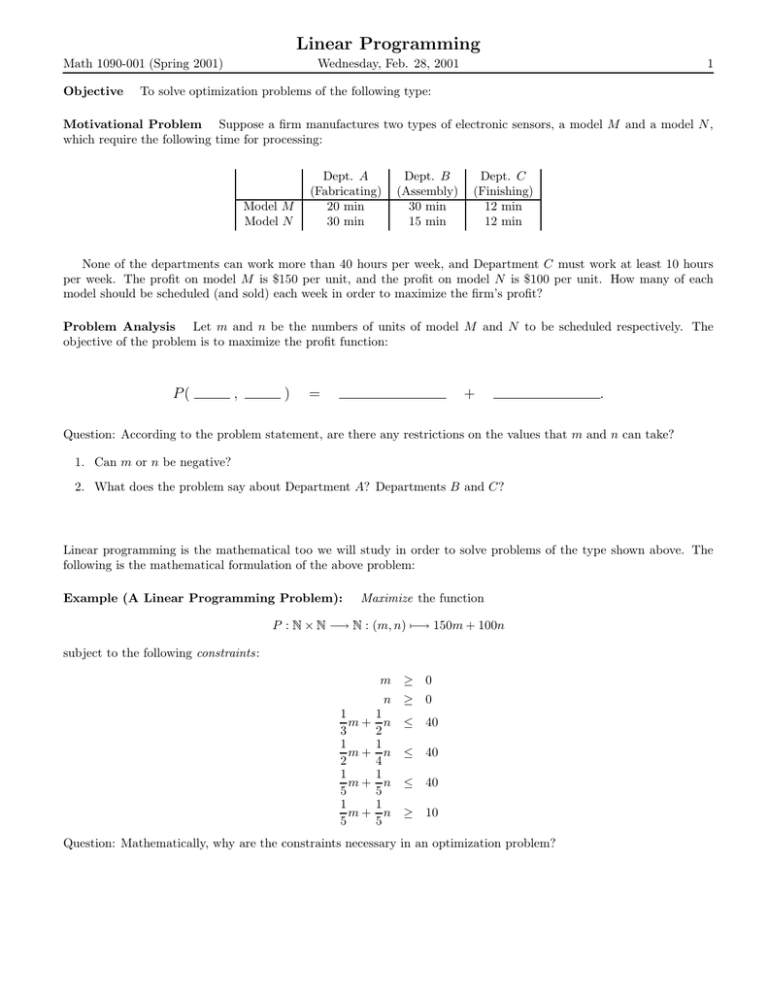
Linear Programming Math 1090-001 (Spring 2001) Objective Wednesday, Feb. 28, 2001 1 To solve optimization problems of the following type: Motivational Problem Suppose a firm manufactures two types of electronic sensors, a model M and a model N , which require the following time for processing: Model M Model N Dept. A (Fabricating) 20 min 30 min Dept. B (Assembly) 30 min 15 min Dept. C (Finishing) 12 min 12 min None of the departments can work more than 40 hours per week, and Department C must work at least 10 hours per week. The profit on model M is $150 per unit, and the profit on model N is $100 per unit. How many of each model should be scheduled (and sold) each week in order to maximize the firm’s profit? Problem Analysis Let m and n be the numbers of units of model M and N to be scheduled respectively. The objective of the problem is to maximize the profit function: P( , ) = + . Question: According to the problem statement, are there any restrictions on the values that m and n can take? 1. Can m or n be negative? 2. What does the problem say about Department A? Departments B and C? Linear programming is the mathematical too we will study in order to solve problems of the type shown above. The following is the mathematical formulation of the above problem: Example (A Linear Programming Problem): P : × −→ Maximize the function : (m, n) 7−→ 150m + 100n subject to the following constraints: m ≥ 0 1 m+ 3 1 m+ 2 1 m+ 5 1 m+ 5 n 1 n 2 1 n 4 1 n 5 1 n 5 ≥ 0 ≤ 40 ≤ 40 ≤ 40 ≥ 10 Question: Mathematically, why are the constraints necessary in an optimization problem?
